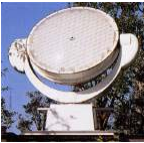I found this interesting article that takes this idea one step further. Instead of using 'regular' optic fibres to power a 'regular' solar panel, researchers are combining the two.
They are aiming to achieve this feat with the help of zinc oxide nanostructures grown on optical fibers and coated with dye-sensitized solar cell materials. Researchers at the Georgia Institute of Technology have built up a new kind of three-dimensional photovoltaic system
So basically the fibre optics have become solar panels.
Using this technology, we can make photovoltaic generators that are
foldable, concealed and mobile. Optical fiber could conduct sunlight
into a building’s walls where the nanostructures would convert it to
electricity. This is truly a three dimensional solar cell
The article states that the researchers achieved a 3.3% efficiency which is fairly low. Today's photovoltaic panels generally have a 15-23% efficiency and the first 'modern' solar panel built in 1954 already had 6% efficiency. However the researchers hope that with further modifications they can achieve 7-8% and they think the costs will be relatively low.


